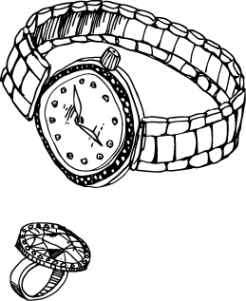Jewelry Theft Shrinks
August 20, 11
When you think jewelry crime, you automatically think Bonnie and Clyde type heists, but sometimes it’s an inside job, with employees helping themselves to cash and goods. It’s a story as old as retail itself, but fortunately, in 2010, employee theft was on the decline, as Ken Gassman explains.
Retail jewelers around the world experienced lower “shrink” rates in their businesses during 2010, according to data from the Retail Theft Barometer. This barometer was part of a report authored by Joshua Bamfield of the Centre for Retail Research in Nottingham, England.
“Shrink” is an accounting term quantifying the value of goods that are lost, stolen or otherwise unaccounted for in retailing. “Shrink” is shown as a percentage of total retail sales. By far, the largest component of “shrink” is employee theft.
 |
In 2010, jewelry “shrink” among all jewelry retailers in countries around the world was 1 percent of retail sales, according to the Retail Theft Barometer, down from the prior year’s 1.06 percent of sales.
Unfortunately, there was no reason given for the dramatic drop in “shrink” between 2007 and 2008; we believe it may have been a change in the sampling method used.
Globally, the Centre for Retail Research says that “shrink” is down primarily because of an improving economy. When times are tight, “shrink” (theft) rises, according to the author. In addition, the report also cited improved anti-theft tactics and enhanced technology as contributing to lower “shrink” rates for retailers.
North America’s Shrink Runs Higher
Unfortunately, jewelers’ retail “shrink” in North American markets runs higher than in other global markets. The trend for jewelry “shrink” in North America appears to be headed lower, but 2010 figures are not yet available.
Employees Are Responsible for Most “Shrink”
According to the report, retail “shrink” is driven by these four factors in the North American market: employee theft (44 percent), shoplifters (36 percent), internal error (16 percent) and vendor error (4 percent)
Most-Stolen Jewelry
The report on “shrink” highlighted the following merchandise as the “most-stolen” jewelry:
· Branded watches
· Rings and earrings
· Branded accessories (this was not defined)
· Gold
Retail “Shrink” Varies By Country
For a variety of reasons, retail “shrink” varies widely by country around the world. The country with the highest overall retail “shrink” is India, with an aggregate 2.72 percent “shrink” rate for all retail categories. It is far ahead of the country with the second-highest “shrink” rate – Morocco 1.64 percent of retail sales.
The overall retail “shrink” rate in 2010 for the U.S. was 1.5 percent; twelfth on the “shrink” list.
The overall global retail “shrink” rate in 2010 was 1.3 percent.
Taiwan had the lowest retail “shrink” rate in 2010 – 0.87 percent of retail sales. It was followed closely by Hong Kong with a “shrink” rate of only 0.91 percent of retail sales.